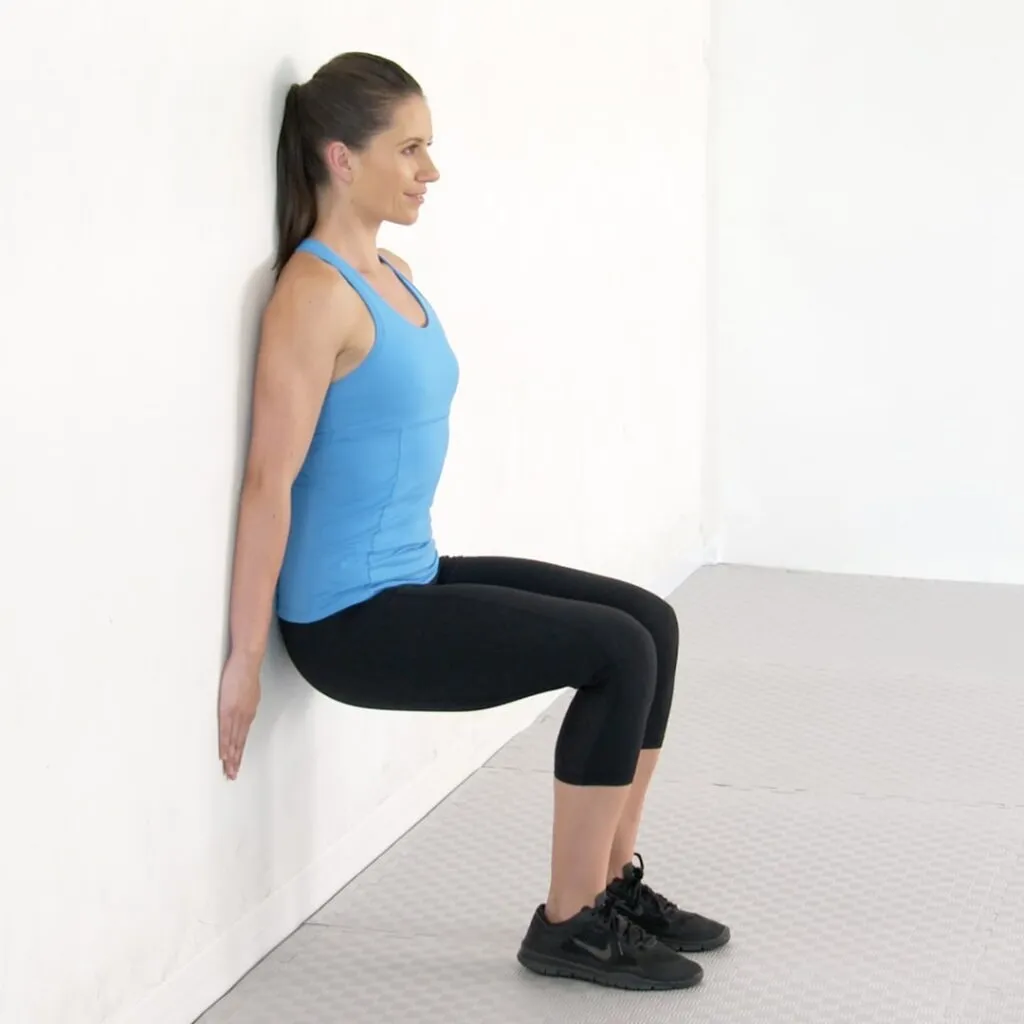Wall squats are an exceptional bodyweight exercise that targets the lower body while requiring minimal equipment—just a wall to lean against! Perfect for beginners and seasoned athletes alike, the wall squat offers numerous benefits, including improved endurance and muscle strength, making it an ideal addition to any workout routine. The wall squat technique emphasizes isometric contraction, allowing practitioners to maintain tension and improve their overall body awareness. By incorporating wall squat workouts into your regimen, you can effectively build stronger legs and enhance your physical fitness. Whether you’re looking to ease into more intense exercises or maintain strength without equipment, wall squats are a fantastic choice for all fitness levels.
Known by various names, such as wall sits or isometric leg holds, these exercises provide a convenient way to do lower body training without weights. This straightforward movement engages the core, glutes, and quadriceps, offering a versatile approach to strength-building. Whether you’re interested in optimizing your training or simply looking for effective methods to boost endurance, isometric exercises like the wall squat are a staple. Understanding how to do wall squats correctly can lead to significant gains in strength and stability, making them suitable for everyone from fitness beginners to advanced athletes. With the right wall squat technique, you’ll maximize the effectiveness of your training sessions.
Understanding the Benefits of Wall Squats
Wall squats are an excellent exercise for those looking to build strength and endurance in their legs without requiring any heavy equipment. One of the primary benefits of wall squats is their ability to engage multiple muscle groups simultaneously, making them a highly efficient choice for leg workouts. This isometric exercise focuses on the quadriceps, hamstrings, and glutes while promoting proper knee flexion, which is crucial for activities like running and jumping. Additionally, wall squats can enhance body awareness by encouraging individuals to focus on their form and posture during the movement.
Incorporating wall squats into your fitness regimen can also serve as a fantastic gateway to more advanced leg workouts. As you become more proficient and build confidence in sustaining longer holds, you’ll likely discover improvements in your overall lower body strength. The controlled nature of wall squats provides a safe way to develop muscular endurance without the risk of injury associated with heavier weightlifting. Overall, the benefits of wall squats extend beyond just physical strength; they can significantly enhance your athletic performance and workout effectiveness.
Frequently Asked Questions
What are the benefits of wall squats?
Wall squats are beneficial for building strength in your legs, enhancing knee stability, and improving body awareness and positioning. They are a low-impact isometric exercise, making them ideal for beginners to safely engage their leg muscles without stressing the joints.
How to do wall squats correctly?
To perform a wall squat, lean against a wall with your feet hip-width apart. Walk your feet forward until your knees are at a 90-degree angle, thighs parallel to the ground, and shins perpendicular. Focus on creating tension in your shoulders, abs, and glutes as you drive your heels into the floor.
What is the correct wall squat technique?
The correct wall squat technique involves ensuring your back is flat against the wall, knees aligned with your toes, and thighs parallel to the floor. Maintain tension in your core and avoid leaning forward to maximize the effectiveness of the wall squat.
How can wall squat workouts be structured?
Wall squat workouts can begin with 2-3 sets, holding for 45-60 seconds each. As you build strength, aim to increase the duration or add weight. This makes wall squats versatile and easy to incorporate into your routine for lower body training.
Are wall squats considered isometric exercises?
Yes, wall squats are categorized as isometric exercises since they involve holding a static position to create muscle tension and strength in your legs without changing the length of the muscle.
| Key Points |
|---|
| Wall Squats are a bodyweight exercise that helps build stronger legs and can be performed without equipment. |
| Ideal for beginners aiming to build strength before moving to heavier weights. |
| Focus on maintaining the wall squat for about 45 seconds to create muscle tension effectively. |
| Follow correct form: Feet slightly wider than hips, back fully against the wall, and knees bent at 90 degrees. |
| Wall squats improve body awareness and knee flexion without straining the body. |
| Perform 2 to 3 sets, holding for 45 to 60 seconds, and progress to weighted squats when ready. |
| Common mistakes include leaning forward with hands on knees, which reduces effectiveness. |
Summary
Wall Squats are an effective way to strengthen your legs, especially for beginners looking to enhance their lower body training. These isometric exercises not only foster muscle tension without excess strain but also improve body awareness and knee flexion. By starting with proper form and gradually extending holding times, Wall Squats can serve as a foundational movement before advancing to heavier weights. Additionally, avoiding common pitfalls such as improper posture will ensure you maximize the benefits of this straightforward yet powerful exercise.



